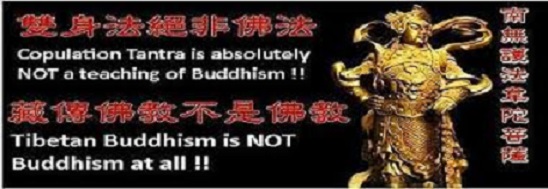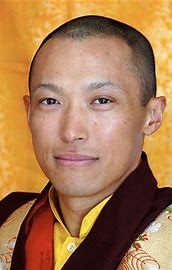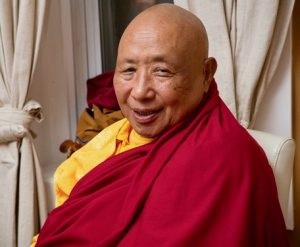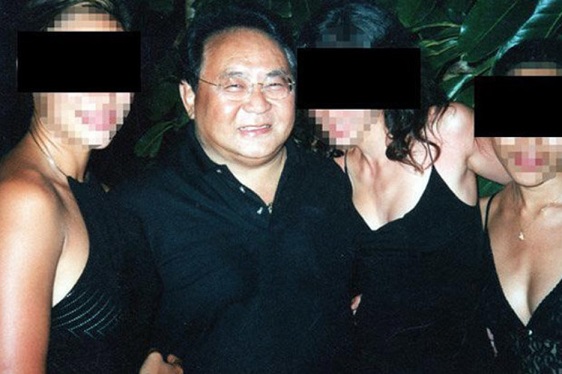| Home » 文章分类_English » Criticism of Sexual Practice |
MeTooGuru:Tibetan Buddhism Enters the 21st Century: Trouble in Shangri-la(2) |
Tibetan Buddhism Enters the 21st Century: Trouble in Shangri-laSakyong Mipham
Sakyong Mipham Rinpoche (b. November 15, 1962) was the head of the Shambhala organization, a global network of over 200 meditation and retreat centers along with extensive real estate holdings. Sakyong; a compound word consisting of sa, “earth,” and skyong, “to protect,” that translates as “earth protector,” “king,” “emperor,” or “governor” is considered a Dharma king and lineage holder of the Shambhala lineage. Sakyong Mipham Rinpoche is regarded as a chögyel (Wyl., chos rgyal, in Sanskrit dharmaraja) or “king of Dharma”, who combines the spiritual and worldly paths. The Sakyong according to the Shambhala view is the earthly embodiment or emanation of enlightened awareness. Though the title Sakyong is associated with the lineage of Shambhala implying an ancient lineage, the first Sakyong was Trungpa, the present Sakyong’s father and founder of the Shambhala organization. Sakyong Wangmo (“Earth Protector Lady”) is the wife and partner of the Sakyong or Earth Protector, and mother of their three children. In this capacity, according to the Shambhala website, the Sakyong Wangmo offers strength and delight in home life, which allows the Sakyong the ground from which he can radiate his teachings out to the world. Again, according to the website, this example of family, based on the principles of enlightened society is a profound offering to the larger society. Sakyong Wangmo was empowered by Penor Rinpoche, who was the head of the Nyingma school from 1993 to his retirement in 2001.66 She comes from an old and distinguished Tibetan family. Her father is the supreme head of the Ripa lineage of Nyingma Vajrayana Buddhism and a living Tertön, or treasure-finder.67 She too by the rules of Tibetan Buddhism, is the real thing. Lama Tsultrim Allione, a well-known western woman teacher of Tibetan Buddhism said about the Shambhala organization that, ‘the level of institutionalized hierarchy is quite extraordinary,’ with the Sakyong functioning ‘sort of like a divine king.’ His inner circle, with its ministers and attendants, is called the [Kalapa] “court”.68 He has a personal flag that local centers can buy for $350, to fly when he visits. We saw earlier how Ösel Tendzin also was waited on hand and foot as if he were a divine king with his meals and bathing carefully orchestrated. One might say that Ösel Tendzin and Trungpa in thinking they had transcended all human limitations actually thought of themselves as divine kings of the universe. The present scandal arose when it was disclosed that the Sakyong had an alcohol abuse problem coupled with sexually forcing himself on young female students. At this time, it also came out that the Shambahla organization has had a long history of sexual abuse even of children by leaders of different Shambhala communities.69 In spite of all the high sounding aims and titles, very troubling events occurring for years at Shambhala were to be dramatically exposed on the internet with the publishing of the Buddhist Project Sunshine in March 2018. Project Sunshine was started by Andrea M. Winn who is a second generation Shambhalian, that is, she grew up in this community. She states, ‘I was sexually abused as a child by multiple perpetrators in our community. When I was a young adult, I spoke up about the community’s sexual abuse problem and was demonized by my local Shambhala Center, ostracized and forced to leave. The shocking truth is that almost all of the young people in my age group were sexually harassed and/or sexually abused. I don’t know the statistics on the generations of children after mine. What I do know is that many of us have left the community, and for those who have stayed, their voices have been unheard. Beyond child sexual abuse, women continue to be abused in relationships with community leaders and by their sanghas.’70 Though Winn does not mention it, one is compelled to ask what the parents of these young people were doing or not doing or thinking, as they had to know this was going on. Was this part of the Shambhala culture and a reflection of Trungpa’s ideas on promiscuous sex, child rearing and family dynamics mentioned earlier by the Steinbecks? Winn continues, ‘I felt awful on a very deep level. Don’t get me wrong. In so many ways I have created a good life for myself. But there has been a deep sick feeling inside of me for all these decades. Shambhala looked wonderful on the outside, and there is no doubt in my mind about the spiritual blessings in these practices. At the same time there has been this incomprehensible sickness.’71 As is often the case, the devil is in the details as we shall also see shortly when we look at Sogyal. There are many first-person accounts related about the Sakyong, but lets just look at three cases to get a deeper sense of what was happening. A second generation Shambhalian, or “dharma brat,” wanted to contribute her story at the last minute after she saw the Sakyong’s “apology” letter: ‘I was sexually assaulted by the Sakyong in the kitchen of the Halifax Kalapa Court after his wife, the Sakyong Wangmo, retired for the night with her first daughter, following the celebration of her first birthday in August, 2011. This experience was traumatic for me. It took place one year after we welcomed Jetsun Drukmo [the Sakyong’s wife] home on that very lawn. It also marked the one year anniversary of meeting my then partner, who stood in the same room as me that night and watched, did nothing, turned the other way. As time went on, the community’s formal responses and members’ processes of relating to this disclosure and fact have overall exacerbated my confusion and suffering and eroded my mind and body’s health. The responses and denials continue to trigger me and prevent me from moving on from that harm and I believe are preventing the community from its own “healing”.’72 Another young woman reported, ‘Over many years I had several sexual encounters with the Sakyong that left me feeling ashamed, demoralized and worthless. Like many young women in the sangha, I was deeply devoted to the Sakyong and did whatever I could to serve him and be close to him. I witnessed the steady stream of attractive women that were invited into his quarters.’73 On another occasion she mentioned being invited to his suite at a dinner party where the Sakyong was encouraging everyone to drink a lot. He then insisted that we take off our clothes. He led one woman into his bedroom while the rest of us danced. After a while his kusung(attendant) came out to get me to come to the Sakyong’s bedroom. I went into the room and discovered the Sakyong and the woman on his bed having sex. He said to me “She won’t come. Do something to help.” I stood there stunned and he said “Play with her tits. Do something.”‘74 Another woman mentions the steady stream of pretty young women invited to the Sakyong’s suite, and his groping her and attempting to have sex with her when he was completely intoxicated, the Sakyong would ‘pull me into a dark corner. He kissed me and groped me while aggressively encouraging me to come to bed with him.’ Most of the time, another woman who had been invited to the party was already present so she refused.75 Buddhist Project Sunshine went viral being written about by the print media and Buddhist websites, while the members at centers around the world having had no idea of the troubling behavior of their leader and guru, were shocked by the allegations. Shambhala is a very large organization so most members were only exposed to the Sakyong in formal gatherings or through his writing. Now they were being shown a man out of control, perhaps alcoholic and selfishly abusing scores of young women for roughly two dozen years. They demanded a response. On June 25, 2018 the Sakyong sent the Shambhala community an open letter of Apology.76 He begins with, ‘To the Shambhala Community: I write to you with great sadness, tenderness, and a mind of self-reflection. It is my wish for you to know that in my past there have been times when I have engaged in relationships with women in the Shambhala community. I have recently learned that some of these women have shared experiences of feeling harmed as a result of these relationships. I am now making a public apology.’ Though he writes as if he is making an open and honest admission of past abuse, he is only admitting to what has already been made public knowledge by the publication of Buddhist Project Sunshine on the internet and even making it into the New York Times.77 Even that admission seems like a whitewash of what is described in the accounts of the Buddhist Project Sunshine. It is not difficult to imagine that without Project Sunshine there would be no ‘honest admission of past abuse.’ The Sakyong’s statement ‘I have recently learned that some of these women have shared experiences of feeling harmed as a result of these relationships’ is less than honest too as he had known that many women felt harmed by his casually using them for sex and then “ghosting” them when he moved onto someone new or if they questioned him about the nature of the relationship. These relationships go back to the early 1990’s or earlier—that is, over 25 years ago. Later in the letter he writes, ‘I am now entering a period of self-reflection and listening.’ One wonders what he was doing or thought he was doing since August 1990, when he was made the lineage holder of the Vajradhatu organization with the death of Ösel Tendzin. One also wonders what the powerful samaya vows between guru and his students imply when by his own admission the Sakyong was not listening or barely listening to his students and was not “self reflecting” on his own behavior. If the Sakyong admits that he was flawed, this also raises the question of how and why he was given so much power and authority by the most senior lamas. Besides, one might wonder why he had been given so much material resources to maintain his family, himself, and the expenses to run the Kalapa Court? It should be clear, that Andrea Winn with the Buddhist Project Sunshine was not trying to destroy Shambhala but rather, to expose the sickness and harm that she and many others have experienced. She wanted to save Shambhala by injecting openness and transparency into the organization and holding its leaders responsible for their actions. She also wanted to create a place where those abused could receive support, healing, community and where they could feel safe to talk out. However revealing Buddhist Project Sunshine was of problems with the Sakyong, an even more revealing document appeared some months later on February 6, 2019: A thirty-five page long open letter signed by six long serving of the closest kusung (Wyl., sku srung, ‘body protectors,’ ‘attendants’) of the Sakyong.78 In it each signer describes his or her experiences of verbal, physical and sexual abuse in vivid detail. Recollections include female students being ‘pushed to rationalize [sex] as a generous offering to their revered teacher,’ stories of Mr Mukpo, as the Sakyong is addressed in the letter, hitting his attendants and forcibly biting people; students crying in a circle in their underwear, a culture of fear, and this is just the first of the six reports. The six authors of the above-mentioned document write of being told to obscure the line between Mr Mukpo’s spiritual teachings and his abusive behavior, believing that the teacher’s behavior was beyond our understanding. They were asked, they say, to regard such abusive activity as the guru’s method of waking us up. In essence, they learned to discredit their own experience. Ben Medrano, one of the signers writes, ‘I was amazed by the opulence, frequency, and duration of his [Sakyong’s] luxury vacations.’ Medrano was also amazed that Sakyong’s and his wife’s toiletry and cosmetic budget rivaled his annual salary as a resident physician. On one occasion he writes, ‘I recall a sober midday call demanding me to push for the unfeasible purchase of an Audi A8. I vividly remember his infuriated words being: “I want my FUCKING Audi!”‘ Allya F. Canepa, another long serving kusung, writes of being called to the Sakyong’s room and being a kusung, she dutifully kneeled by the side of his bed, waiting to see what the Sakyong wanted. She reports: ‘I was surprised when he put his hand down my shirt and fondled my breasts and said, “please I just want to sleep,” firmly directing my head to his cock. I obliged and shook it off.’79 Canepa added, ‘in the Vajrayana we are taught that all body fluids, or pieces of clothing, tufts of hair, or leftover food from the guru’s plate are blessings gifted directly from the body of enlightenment.’ Canepa also writes of ‘seeing hundreds of women go in and out of Mr. Mukpo’s bedroom and often consoling them afterward.’80 It should be clear that the abusive situation with the Sakyong was not just between two consenting adults, as some of his apologists claim, but rather between a so called “tantric master” with the title “earth protector” presented as a “king of truth” being the sole authority, and a disciple, with the sex act promising to give spiritual benefit. The reader might want to question how the idealized presentation of the past and the words of endorsement of the Sakyong from the highest lamas effected their view of the Sakyong and the whole organization supporting his role? They may want to ask on what the endorsements of high lamas was based, and what it means? Were the students blind followers or were they led down that path through their samaya vows? The Sakyong, by his own admission, hardly seemed like the real life model of the “king of truth”—who according to the Shambhala view is the earthly embodiment or emanation of enlightened awareness. Yet another question has to do with the legality of the funding of the Kalapa Court, with money and its allocation coming through different Shambhala corporate entities, some tax free? Lama Norlha
In 1978 Lama Norlha Rinpoche (b. 1938 d. 2018) founded the Kagyü Thubten Chöling Monastery (KTC) and its Retreat Centers in Wappingers Falls, New York, in the tradition of the previously mentioned Kalu Rinpoche. In addition to a daily schedule of practice, study and work, weekend seminars and special courses were led by resident and visiting lamas. The monastery is also home to a traditional three-year retreat program currently (2019) in its ninth cycle. This program has been a major focus of the monastery since it was initiated in 1982. Lama Norlha also did much charitable work in terms of bringing health care and education for both children and nuns in Tibet. Over a period of more than 30 years, the monastery hosted two visits from the Dalai Lama, and received blessings from both the sixteenth and seventeenth Karmapas, the heads of the Kagyü lineage, as well as numerous teachings and empowerments from the spiritual heads and other notable lamas from all four lineages of Tibetan Buddhism.81 Lama Norlha Rinpoche, who entered a monastery at five years old, was an accomplished meditation and retreat master.82 He had completed two three-year retreats by the time he was twenty-one. He served as the director of the revered meditation master, Kalu Rinpoche’s Dharma centers in the eastern half of the United States. Lama Norlha, like his teacher Kalu Rinpoche, presented himself as living a celibate life but in reality had at least six secret affairs with female students of his over a period of three decades. On April 12, 2017, KTC, the monastery and retreat center, hosted a Sangha-wide Disclosure Meeting to inform their community that the founder and principal abbot of their monastery, Lama Norlha Rinpoche, had been secretly involved sexually with a number of female students over the last three decades. The disclosure process was initially set in motion by the coming forward of two former female residents of the monastery, who disclosed their sexual relationships with Lama Norlha to a group of senior officials at KTC in December 2016.83 Approximately 160 people were present at the Disclosure Meeting, including the two female students, who read aloud statements relating their experiences with Lama Norlha. Zen teacher Jan Chozen Bays acted as a representative and read the statements for three other female students who were not present but wrote that they were sexually involved with Lama Norlha. After the statements were read, a sixth woman came forward saying that she too had been involved in a sexual relationship with Lama Norlha. Most of the women reported they felt the relationship to be detrimental to their psychological and personal well being. The Disclosure Meeting included a taped apology from Lama Norlha Rinpoche, who did not attend.84 What was not mentioned or at least made public outside of the meeting was how the relationships began and how they ended—by the women or Lama Norlha, were some relationships concurrent, did the women think or were they led to believe they were the only one, and was there a sense of romance between Lama Norlha and the women? What had the women thought the nature of the relationship had been? How did Lama Norlha present what had been happening with the women? Lama Norlha had since the meeting been removed from the teaching seat. The KTC website describes his status as “retired.” He passed away one year later, February 19, 2018 at the age of 79. According to the KTC website, in the final weeks of his life, Lama Norlha Rinpoche was fortunate to receive visits from the Gyalwang Karmapa (the seventeenth Karmapa) and Sakya Trichen Dorje Chang. The day before he passed away, Rinpoche was blessed with a visit from the Karmapa who bestowed the empowerment of Buddha Akshobya on Rinpoche. Sakya Trichen had bestowed this empowerent a few weeks earlier.85 Clearly, Lama Norlha reflects the years of secret sexual activity of his teacher Kalu Rinpoche, who is mentioned above in relation to Ösel Tendzin. At the Disclosure Meeting, Lama Norlha’s taped apology mentioned being sorry for any suffering he may have caused. It seems then that he made no effort to pretend that his sexual activity was tantric practice in the quest for enlightenment, at least not for the women who felt it was ‘detrimental to their psychological and personal well being.’ Then what was its purpose? Prolonging life for an older man as having sex with young woman is widely believed to effect in the East or to inspire his visions. Or was it, perhaps, the ordinary need for close human contact? It also raises the question of how he could have had at least six relationships, but maybe more, with female students over a period of thirty years living in a fairly closed environment without any of his assistant lamas or perhaps close older students knowing what was going on? Were taking samaya vows instrumental in keeping the secret? As Lama Norlha was close to the highest Tibetan Buddhist clergy from the Dalai Lama and the Karmapa down, one wonders who if any of these elite clerics knew of Norlha’s secret life? If they did know, it did not seem like it was particularly troublesome for the elite clergy. As there is so much made of mystical power and spiritual insight connected to high Tibetan Lamas it seems fair to ask did something as ordinary as maintaining a secret sex life happening under their noses elude these lamas? And if it did elude them, what does it say about their supposed extraordinary powers and insight? Is it common knowledge among the Tibetan clergy that many lamas have secret sex lives, and that the “secret” is to be well kept to differentiate the clergy from lay people? This leads their devotees to believe that their clergy and lamas live in a sphere of piety which elevates their status above regular people while keeping the hierarchy in place and the donations flowing? Perhaps a more fundamental question raised by Lama Norlha’s actions has to do with his practice, attainment, and elevated status in the Tibetan Buddhist hierarchy. Lama Norlha entered the Korche Monastery by the age of five and spent his life taking part in and leading empowerments and retreats, fasts, chanting services, Mahamudra practice, leading his followers in offering over a million butter lights, and daily meditation. He supposedly saw into emptiness and realized his true nature. Yet for thirty years or so he secretly had a need for intimate female companionship. One wonders how the Tibetan system of taking young boys away from their mothers and families and raising them in the all male monastic world, which we have seen can be quite abusive, affects their emotional well being and need for close human contact and their relationship to women. This need appears to have caused Lama Norlha to have a string of secret relationships in which he had to know that in the end some of these women would not feel good about what was happening. It also caused him to live a lie with at least his very devoted students who certainly were some of the people closest to him. This went against the strong elements in Tibetan Buddhism to which he devoted his entire life, against causing harm to others and to selfishness which supposedly truly realizing emptiness avoids. And yet, that is exactly what he did. Sogyal Rinpoche
Sogyal Rinpoche (b. 1947), comes from a prominent merchant family in the Kham region of eastern Tibet. He is the founder and was the spiritual leader of the Tibetan Buddhist organization called Rigpa (“Essential Nature of Mind”), which has a worldwide reach with 130 centers in 41 countries. Sogyal is a Tibetan Dzogchen lama in the Nyingma sect. His bestselling book, The Tibetan Book of Living and Dying was printed in 30 languages and has sold more than three million copies.86 He starred alongside Keanu Reeves in the movie Little Buddha. Sogyal is a highly successful guru—perhaps the best known Tibetan in the West after the Dalai Lama. Sogyal is regarded by his students as a living embodiment of the Buddhist teachings of wisdom and compassion, yet a man who teaches in a highly unorthodox way, known as “Crazy Wisdom”.87 “Crazy wisdom” was coined by Chogyam Trungpa who Sogyal greatly admired and who he wished to imitate in his rock star life style aspect after seeing him in Boulder, Colorado in the mid 1970’s.88 His center Lerab Ling is said to be the largest Tibetan Buddhist temple in the West. The organization Rigpa was established quite early on in Sogyal’s career in London. News of his sexual predations and misbehavior filtered back to the late Dudjom Rinpoche, then head of the Nyingma sect and one of the world’s eminent meditation masters. Sogyal had dedicated his London Centre, Orgyen Chöling, to Dudjom. However, when the latter heard of Sogyal’s behavior, he suggested Sogyal give up teaching for a while and return to India to “ripen his practice.” Sogyal’s response was to remove his center from Dudjom Rinpoche’s tutelage and change its name to Rigpa (corresponding to the Skt. vidya, knowledge) with himself as head, accountable to no-one except himself.89 Lerab Ling (“Sanctuary of Enlightened Action”) is Rigpa’s international retreat center and home to the newly constructed temple known as The Institute of Wisdom and Compassion. Lerab Ling was founded in 1991 by Sogyal Rinpoche and is located near Montpellier in southern France. From its opening, the Center has been a place of teaching by a who’s who of Tibetan Buddhist teachers. They include the Dalai Lama and some of his teachers, and also students of the famous Dilgo Khyentse Rinpoche, who was the Dalai Lama’s principle teacher in Nyingma and Dzogchen Buddhism, and Dudjom Rinpoche among others. The list of distinguished Tibetan Buddhist teachers is too long to list here.90 The Dutch investigator Rob Hogendoorn refers to Sogyal’s supposed enlightenment as “enlightenment by association.” That is, it was assumed by Sogyal’s western followers that he was on par with the famous lamas who visited and taught and who he entertained at his Center.91 Sogyal supposedly was recognized as a tulku, the reincarnation of Tertön Sogyal, a teacher of the Thirteenth Dalai Lama. This is questioned by some knowledgeable Tibetans.92 He claimed to have studied traditional subjects at Dzongsar Monastery with a number of tutors though his main tutor died when he was a child. Most of his education took place in schools in India. He was trained by French-Roman Catholics at St. Augustine’s School in Kalimpong and by English Anglicans at St. Stephen’s College in Delhi. According to authors Mary Finnigan and Rob Hogendoorn, Sogyal’s credentials as a Nyingma master are at best questionable because of limited training and education.93 Whatever else one may say about Sogyal, there is no denying that he was a money machine. At his center Lerab Ling in southern France a week of teaching in 2011 was €500—which entitled participants to pitch a tent and eat vegetarian food. Five hundred people attended the retreat, including reporter Elodie Emery of Marianne magazine—which means that Sogyal attracted more than €250,000 on one occasion. Emery estimates that Lerab Ling pulls in €1m to €1.5m annually in retreat fees alone—in addition to shop sales and donations. Sogyal’s global organisation, Rigpa, has websites that include multiple income streams. One of them, the Tertön Sogyal Foundations, targets will bequests.94 Board members include Pedro Beroy, the managing director of the investment banking division of Credit Suisse.95 Following the Rigpa path is extremely expensive. Air France pilot Guy Durand was a career 747 captain. He became deeply committed to practice under Sogyal, rising in the hierarchy to become a Dharma teacher. Guy points out the underlying expenses: ‘You have to buy ritual objects and constantly update study material. You pay for courses, study days, statues, food offerings for the temple—the list is endless. You have to sponsor people who can’t afford retreats and for those who can, the price is exorbitant. They never stop asking for money—and it’s done with subtle persuasion—pretty speeches scripted specifically to make you put your hand in your pocket.’96 Other former Rigpa insiders confirm that there is relentless pressure to donate money. According to one of them: ‘I even heard Sogyal say to one man “just shut up and give me your money.”‘97 Before Sogyal’s retirement, in the wake of abuse allegations in 2017, he had been teaching for over 30 years in Europe, America, Australia, and Asia. Sogyal Rinpoche has been accused of sexual and physical assault and abuse, as well as misusing charitable funds to live a high lifestyle, with allegations stretching back to the 1970s. https://openbuddhism.org/tibetan-buddhism-enters-the-21st-century-trouble-in-shangri-la/
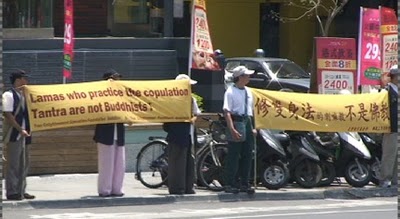 Lamas who practice the copulation Tantra are not Buddhists! |
| Home » 文章分类_English » Criticism of Sexual Practice |

简体 | 正體 | EN | GE | FR | SP | BG | RUS | JP | VN The Truth of Tibetan Buddhism Home | GUEST BOOK | LOGIN | LOGOUT
- Reports of Tantric Victims
- Chinmoy-Abuse
- Journal of True Enlightenment
- Criminal Dalai Lama and Tibet – Force
- Criminal Dalai Lama and Tibet – Sexual Practice
- Criticism of Force
- Criticism of Dalai Lama
- Criticism of Lamaism
- Criticism of Sexual Practice
- Recommendable books
- Roach-Event
- Samyukta-Agama Sutra
- Swami-Abuse
- True Face of the Dalai Lama
- True Heart News
- True Meaning of Sutras
- True Wisdom of Buddhism
- Truth from Insider of Lamaism
- Behind the Facade of Tibetan Buddhism
- The Secrets of Tibetan Buddhism
- Ole Nydahl-Event
Before Buddhism was brought to Tibet, the Tibetans had their believes in "Bon". "Bon" is a kind of folk beliefs which gives offerings to ghosts and gods and receives their blessing. It belongs to local folk beliefs.
In the Chinese Tang Dynasty, the Tibetan King Songtsän Gampo brought “Buddhism” to the Tibetan people which became the state religion. The so-called “Buddhism” is Tantric Buddhism which spreads out during the final period of Indian Buddhism. The Tantric Buddhism is also named "left hand tantra" because of its tantric sexual practices. In order to suit Tibetan manners and customs, the tantric Buddhism was mixed with "Bon". Due to its beliefs of ghosts and sexual practices, it became more excessive.
The tantric Master Atiśa spread out the tantric sex teachings in private. Padmasambhava taught it in public, so that the Tibetan Buddhism stands not only apart from Buddhist teachings, but also from Buddhist form. Thus, the Tibetan Buddhism does not belong to Buddhism, and has to be renamed "Lamaism".

